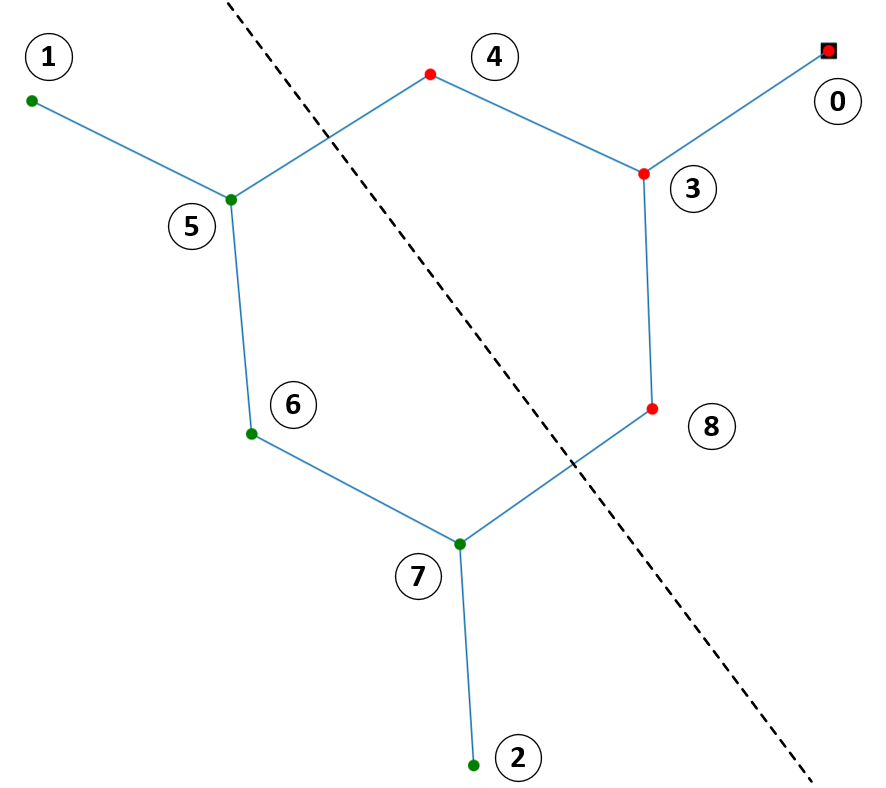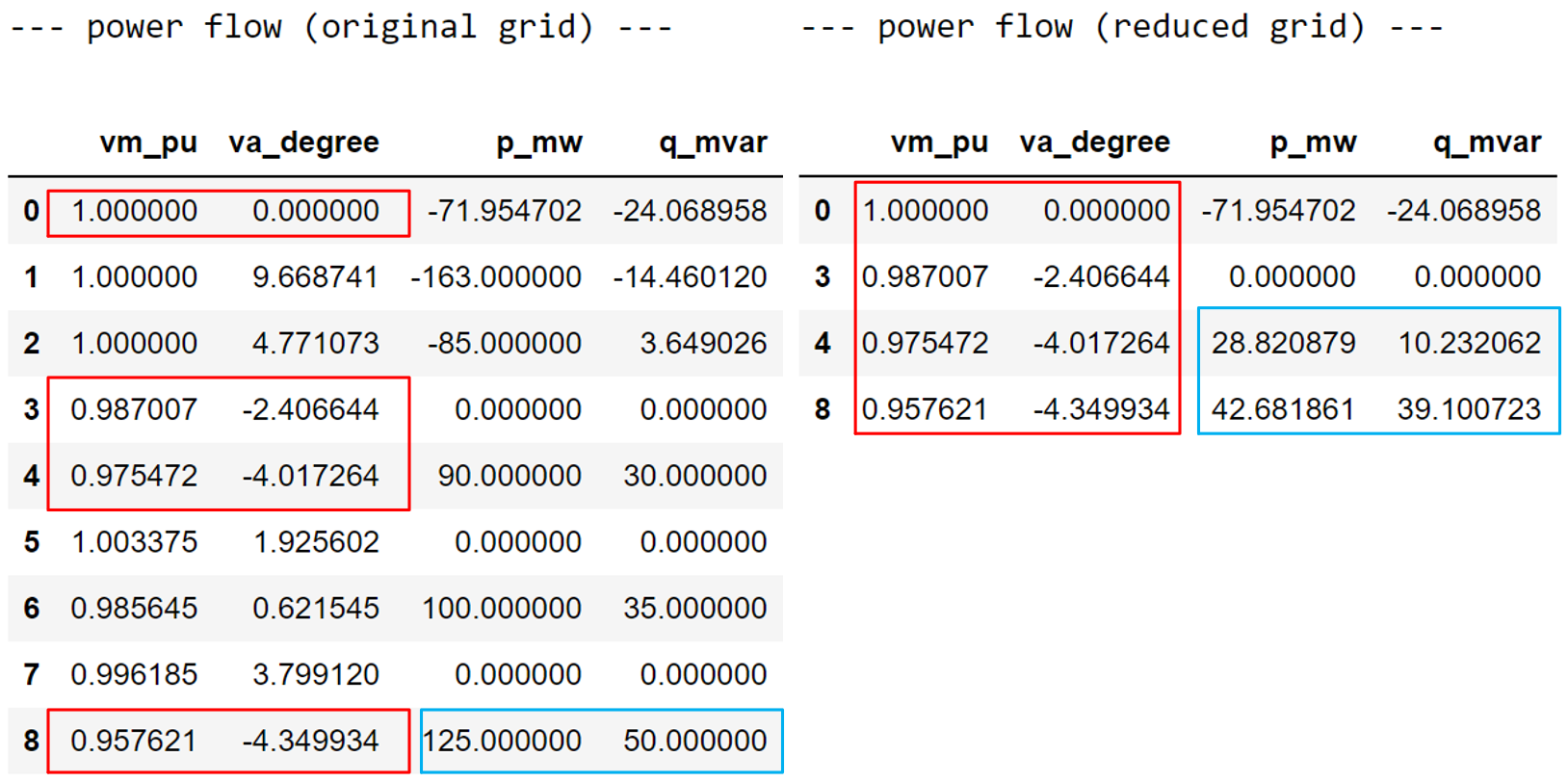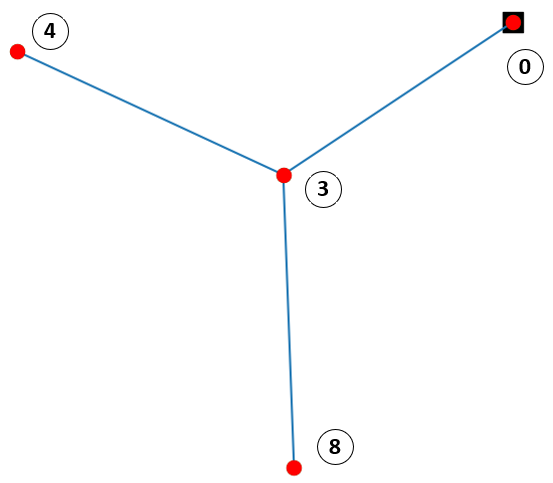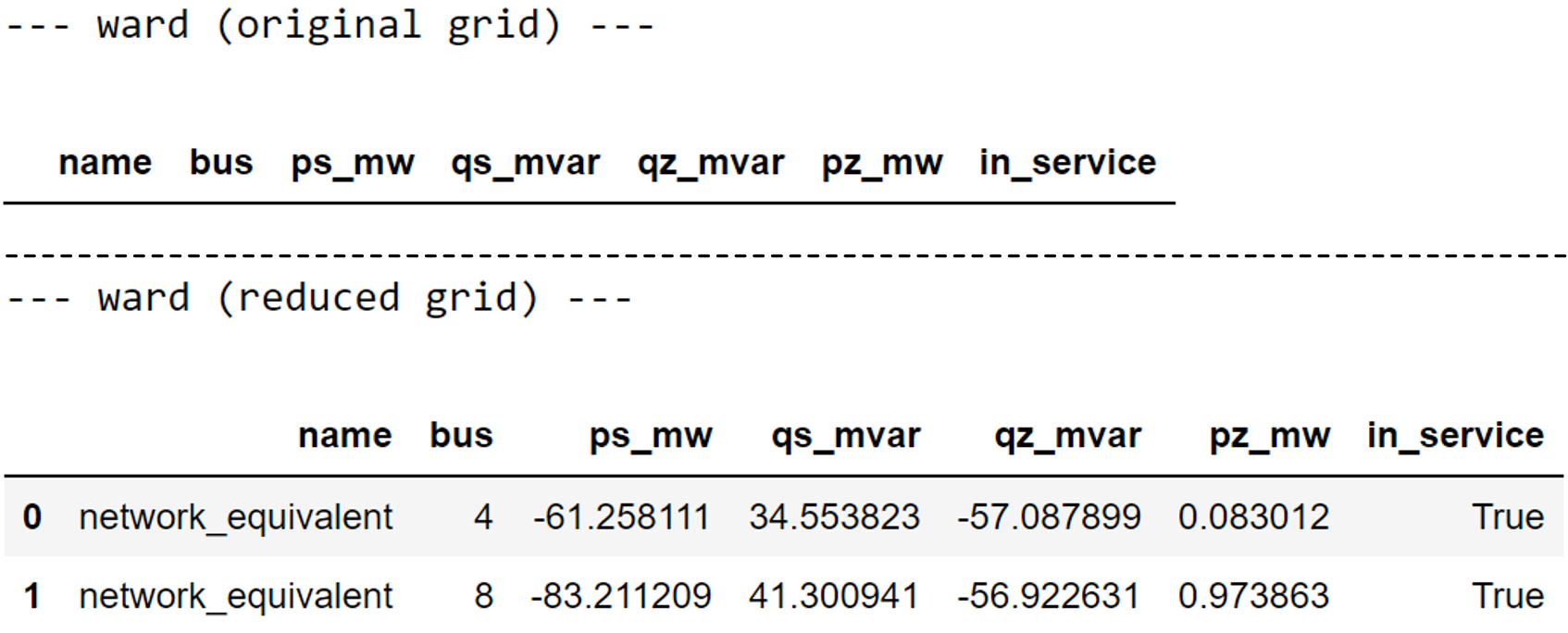Grid Equivalent Example¶
Here is an example of what you can do:
Create Example Network¶
First, we create an example network.
import pandapower as pp
net = pp.case9()
# getting power flow results
pp.runpp(net)
Define Grid Areas¶
The created network is shown below. Assuming that the buses (red) [0, 3, 4, 8] belong to the internal subsystem which should be remained, and the external subsystem consists of buses (green) [1, 2, 5, 6, 7] that are going to be reduced. The boundary buses [4, 8] are belonging to the internal subsystem.

Execute Grid Equivalent Calculation¶
According to the above assumptions, input variables for the Ward-equivalent are:
# equivalent type
eq_type = "ward"
# internal buses: we don't need to give all internal buses to the function. Just one of them is enough.
internal_buses = [0]
# boundary buses
boundary_buses = [4, 8]
Then we start the Ward-equivalent calculation:
net_eq = pp.grid_equivalents.get_equivalent(net, eq_type, boundary_buses, internal_buses)
Power Flow Results Comparison¶
We can compare the power flow results between the original grid “net” and the reduced grid “net_eq”:
print("--- power flow (original grid) ---")
net.res_bus
print("--- power flow (reduced grid) ---")
net_eq.res_bus

It can be seen that the power flow results (vm_pu, va_degree) of the internal buses [0, 3, 4, 8] in both grids are the same (the difference is smaller than \(10^{-6}\) pu or degree), i.e., the equivalent calculation is successful. The p_mw and q_mvar values at the boundary buses [4, 8] are different due to the created Ward elements. The figure below shows the reduced grid.

Equivalent Elements¶
We can print the calculated Ward elements using:
print("--- ward (original grid) ---")
net.ward
print("--- ward (reduced grid) ---")
net_eq.ward

Note
If you compare the resulting (x)ward-parameters between pandapower and PowerFactory, you will see they are different. This is because in PowerFactory the admittance matrix is reconstructed according to a voltage sensitivity analysis, which is not open-source and leads to the difference.